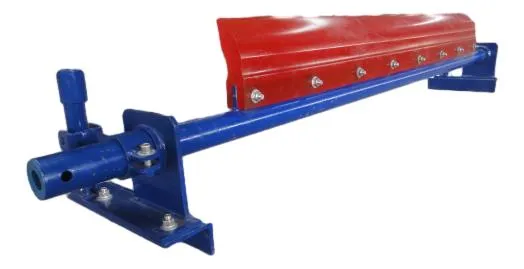 Afrikaans
Afrikaans  Albanian
Albanian  Amharic
Amharic  Arabic
Arabic  Armenian
Armenian  Azerbaijani
Azerbaijani  Basque
Basque  Belarusian
Belarusian  Bengali
Bengali  Bosnian
Bosnian  Bulgarian
Bulgarian  Catalan
Catalan  Cebuano
Cebuano  Corsican
Corsican  Croatian
Croatian  Czech
Czech  Danish
Danish  Dutch
Dutch  English
English  Esperanto
Esperanto  Estonian
Estonian  Finnish
Finnish  French
French  Frisian
Frisian  Galician
Galician  Georgian
Georgian  German
German  Greek
Greek  Gujarati
Gujarati  Haitian Creole
Haitian Creole  hausa
hausa  hawaiian
hawaiian  Hebrew
Hebrew  Hindi
Hindi  Miao
Miao  Hungarian
Hungarian  Icelandic
Icelandic  igbo
igbo  Indonesian
Indonesian  irish
irish  Italian
Italian  Japanese
Japanese  Javanese
Javanese  Kannada
Kannada  kazakh
kazakh  Khmer
Khmer  Rwandese
Rwandese  Korean
Korean  Kurdish
Kurdish  Kyrgyz
Kyrgyz  Lao
Lao  Latin
Latin  Latvian
Latvian  Lithuanian
Lithuanian  Luxembourgish
Luxembourgish  Macedonian
Macedonian  Malgashi
Malgashi  Malay
Malay  Malayalam
Malayalam  Maltese
Maltese  Maori
Maori  Marathi
Marathi  Mongolian
Mongolian  Myanmar
Myanmar  Nepali
Nepali  Norwegian
Norwegian  Norwegian
Norwegian  Occitan
Occitan  Pashto
Pashto  Persian
Persian  Polish
Polish  Portuguese
Portuguese  Punjabi
Punjabi  Romanian
Romanian  Russian
Russian  Samoan
Samoan  Scottish Gaelic
Scottish Gaelic  Serbian
Serbian  Sesotho
Sesotho  Shona
Shona  Sindhi
Sindhi  Sinhala
Sinhala  Slovak
Slovak  Slovenian
Slovenian  Somali
Somali  Spanish
Spanish  Sundanese
Sundanese  Swahili
Swahili  Swedish
Swedish  Tagalog
Tagalog  Tajik
Tajik  Tamil
Tamil  Tatar
Tatar  Telugu
Telugu  Thai
Thai  Turkish
Turkish  Turkmen
Turkmen  Ukrainian
Ukrainian  Urdu
Urdu  Uighur
Uighur  Uzbek
Uzbek  Vietnamese
Vietnamese  Welsh
Welsh  Bantu
Bantu  Yiddish
Yiddish  Yoruba
Yoruba  Zulu
Zulu Different Types of Conveyor Belt Pulleys and Their Applications
Understanding Conveyor Belt Pulley Types
Conveyor belts are a critical component in various industries, facilitating the movement of materials efficiently from one point to another. Pulleys are integral to the functionality of these conveyor systems. They not only support the conveyor belt but also help in the drive mechanism, allowing the belt to move. This article delves into the different types of conveyor belt pulleys, their functions, and their applications.
1. Drive Pulleys
Drive pulleys, also known as head pulleys, are essential in the conveyor system as they are responsible for moving the belt. They are located at the discharge end of the conveyor and are driven by a motorized gearbox or a similar mechanism. The primary function of a drive pulley is to provide the necessary traction for the belt to move. In many cases, drive pulleys have a rubberized surface to increase friction and prevent slippage.
2. Tail Pulleys
Tail pulleys, situated at the loading end of the conveyor, are critical for supporting the return side of the conveyor belt. They help in maintaining belt tension and alignment as it travels back to the drive pulley. Unlike drive pulleys, tail pulleys are usually free-rolling and do not have a motorized mechanism attached. They play a significant role in ensuring the conveyor belt runs smoothly and helps extend its lifespan.
3. Bend Pulleys
Bend pulleys are utilized to change the direction of the conveyor belt within the system. They allow the belt to navigate corners or alter its vertical and horizontal paths. Bend pulleys are typically found in more complex conveyor systems that require flexible configurations. They may be positioned within the conveyor layout to ensure that the belt maintains the desired trajectory without compromising material handling efficiency.
4. Snub Pulleys
conveyor belt pulley types

Snub pulleys are used to increase the angle of wrap between the belt and the drive pulley. This is essential for enhancing the grip and tension on the drive pulley, which allows for better performance when the conveyor belt is under load. By increasing the contact area, snub pulleys minimize slippage and help in achieving optimal belt performance.
5. Take-Up Pulleys
Take-up pulleys play a vital role in maintaining the tension of the conveyor belt. They are usually located at one end of the conveyor system and allow for adjustments to the belt's tension as it stretches over time. The ability to effectively adjust tension is crucial for preventing conveyor belt misalignment and ensuring smooth operations.
6. Return Pulleys
Return pulleys are crucial for managing the return path of the belt. As the conveyor belt moves materials, it transitions into a return pathway where it travels back to the drive pulley. These pulleys, usually free-rolling, ensure that the belt maintains its alignment and tension without causing undue wear and tear on the system.
7. Specialty Pulleys
In addition to standard pulleys, there are specialty pulleys designed for specific applications. For example, self-cleaning pulleys are equipped with mechanisms that prevent material build-up, reducing maintenance needs. Additionally, impact pulleys can absorb shocks from heavy loads, further protecting the conveyor system.
Conclusion
Selecting the right type of conveyor belt pulley is critical for the efficiency and longevity of any conveyor system. Each pulley type serves a specific purpose, from tension maintenance to material direction changes. Understanding their functions helps in designing a more effective conveyor system tailored to the needs of various industrial applications. Proper installation and maintenance of these components ensure that conveyor systems operate smoothly, ultimately enhancing productivity and reducing operational costs. As industries continue to evolve, the technologies and designs of conveyor belt pulleys will likewise adapt, ensuring optimal performance in logistics and material handling.
-
Revolutionizing Conveyor Reliability with Advanced Rubber Lagging PulleysNewsJul.22,2025
-
Powering Precision and Durability with Expert Manufacturers of Conveyor ComponentsNewsJul.22,2025
-
Optimizing Conveyor Systems with Advanced Conveyor AccessoriesNewsJul.22,2025
-
Maximize Conveyor Efficiency with Quality Conveyor Idler PulleysNewsJul.22,2025
-
Future-Proof Your Conveyor System with High-Performance Polyurethane RollerNewsJul.22,2025
-
Driving Efficiency Forward with Quality Idlers and RollersNewsJul.22,2025





























